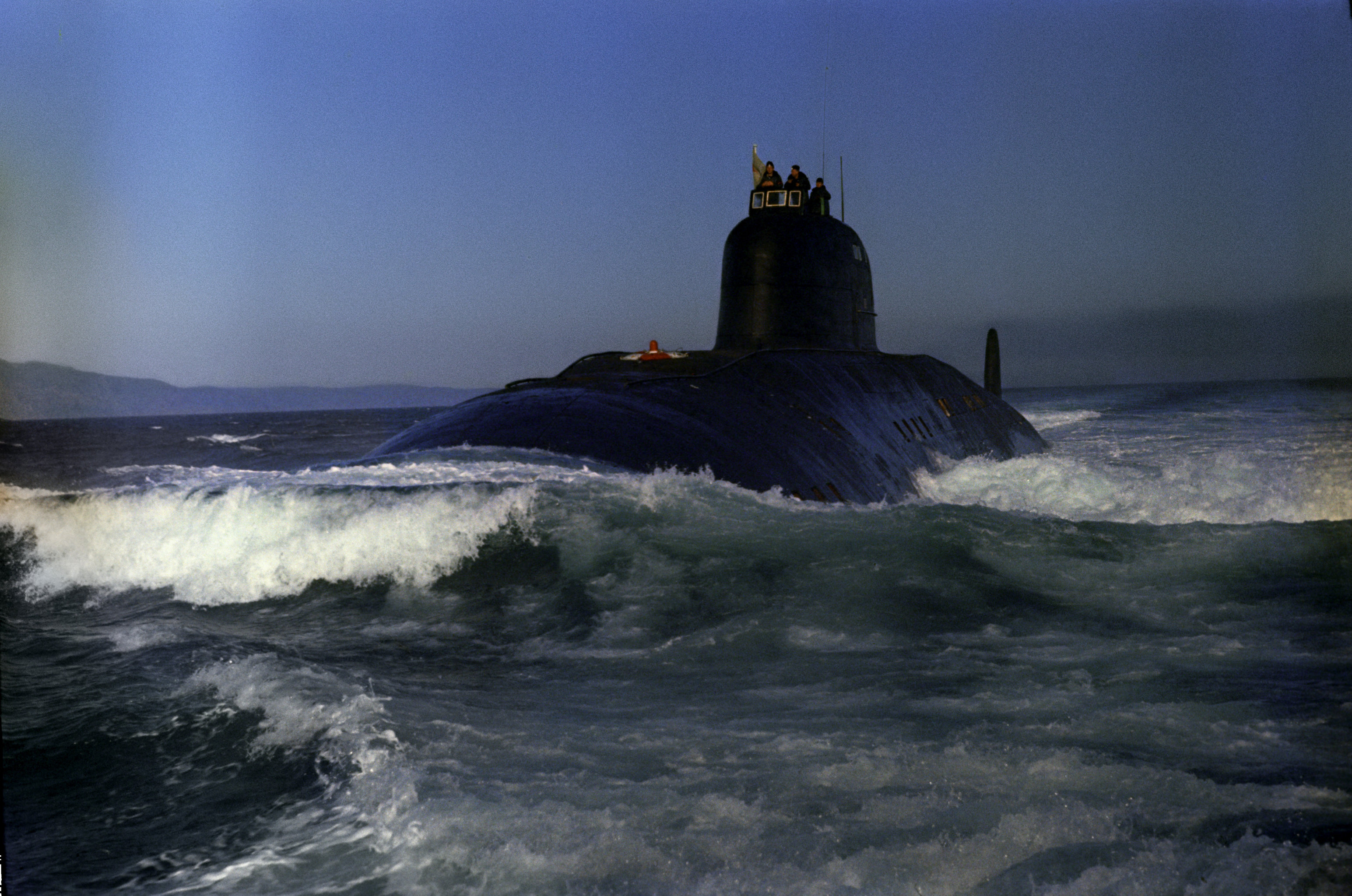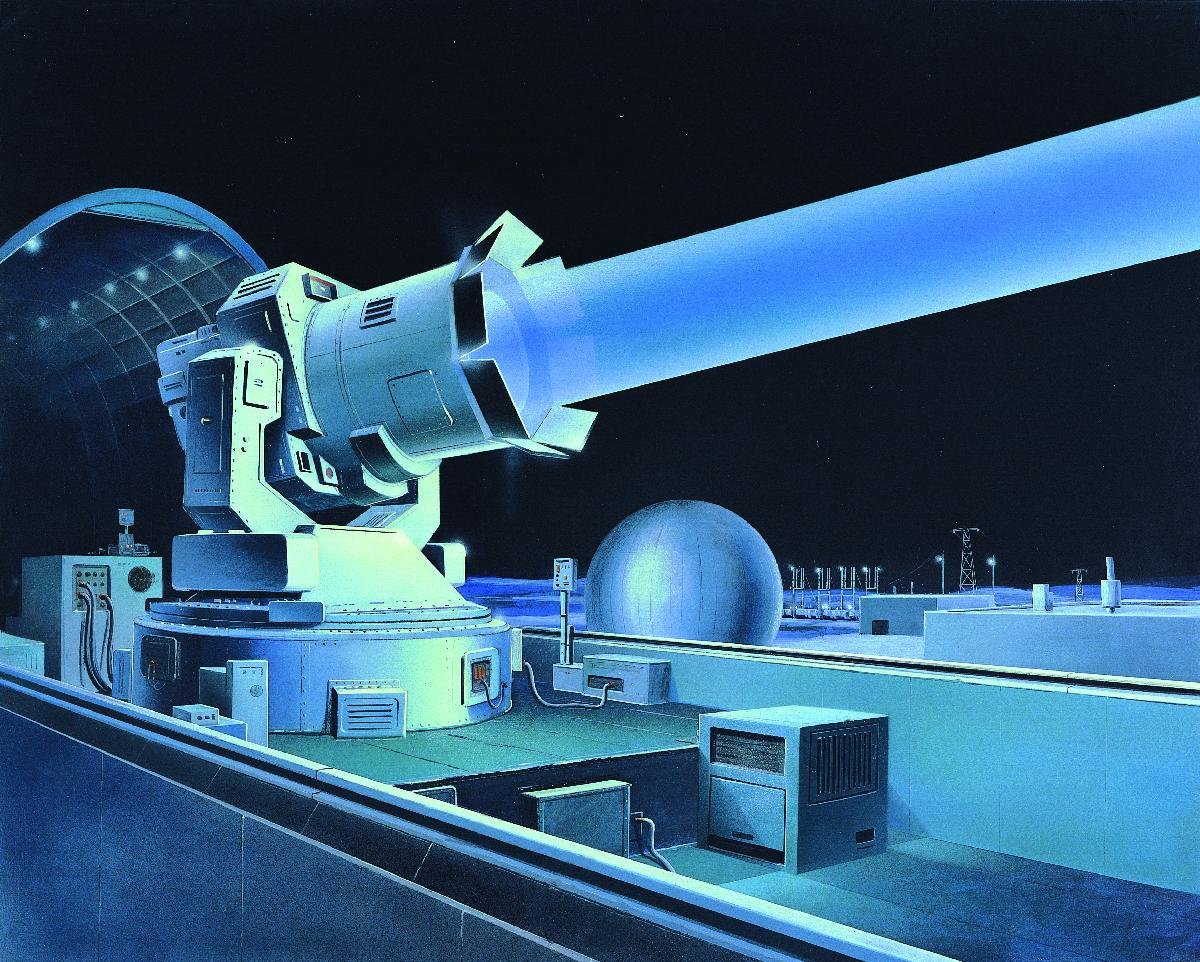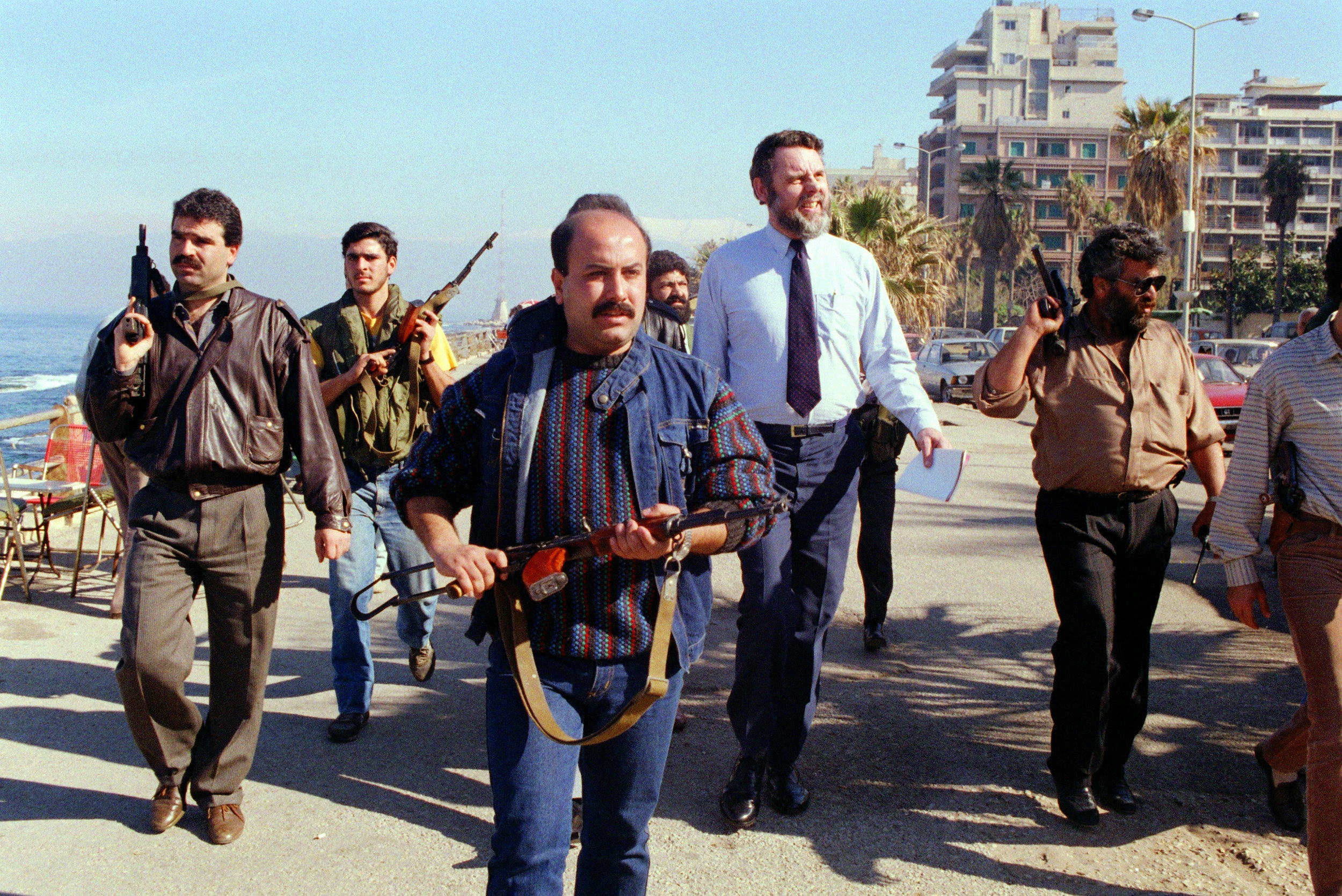Soviet and foreign journalist at a Soviet chemical munitions facility watch as a chemical round is dismantled. © Sputnik A. Solomonov
StarGate ‘The Only Unit That Could Answer the Call’
What information can you share with us about the broader US psychic spying programs during the Cold War?
I was the operations and training officer for that program at the Defense Intelligence Agency. I trained all of the officers in the program to be able to use these skills. It’s a very rigorous, systematic training program. That’s not classified anymore. In fact, I provided those protocols to my former KGB counterparts when I visited St. Petersburg a couple of years ago.
But yes, I was involved in operations and training of all of it, period. But I had nothing to do with the management, and did not want anything to do with the management.
“Very few other programs would be able to describe these kinds of offensive systems except for us, and that’s why we were so important.”
Why did the US decide to set up this type of psychic spying initiative during the Cold War?
Because we were the only unit that could ‘answer the mail’, allegorically speaking. We could by hook or by crook get into very classified programs and discern what the Soviets were doing.
Were they building titanium submarines that could dive deeper than the US subs, and present a threat there? What kind of biological weapons were they developing? What kinds of directed particle beam or high-powered microwave weapons were they developing? Very few other programs would be able to describe these kinds of offensive systems except for us, and that’s why we were so important.
In fact, there were moments where we could actually penetrate the Soviet Defense Council meetings and discern what their plans were strategically for the future. And that’s why we were so ‘sexy’ in terms of Washington, DC and the intelligence community. Nobody else could do that except us.
DIA illustration of Soviet laser system from the 80s annual report ‘Soviet Military Power’. © CC0 Edward L. Cooper
KGB and GRU Extrasense Programs
Did it appeal to you that this technology you were dealing with was 10-15 years in advance of any other country or organization? Was it a big motivator?
Extremely. It was the spice of life as far as I was concerned. Now, the KGB had an extra-sense program, run by a KGB colonel. They never knew how to train this, so they chose very gifted psychics from Leningrad and Moscow and directed their attention to programs similar to what we were looking at in the Soviet Union. They were directed to look at US secret programs, but they weren’t able to train this.
“The GRU, Soviet military intelligence had a program too; they were trying to induce altered states using drugs.”
The GRU, Soviet military intelligence had a program too; they were trying to induce altered states using drugs. The technology that we use now is very different. Using mind-expanding drugs like Halcion or LSD doesn’t work, because the viewer – the operator, cannot maintain focus on his or her target, so that didn’t work.
StarGate May Be Gone,
But Remote Viewing Hasn’t Gone Anywhere
“What has changed in the last twenty plus years is the ability now to pinpoint a target within four hours; that is a huge, huge advantage…”
You now have over thirty years of experience with remote viewing. How has it changed since the 1980s, and how are you utilizing this discipline to help organizations and countries today?
There’s one very significant change. As I’ve evolved this tool over the years, there’s one thing that we could not do in the military unit. One of our primary tasks during the 1980s was to locate hostages in the Middle East that terrorists had under their control; Terry Waite, Terry Anderson, Colonel William Higgens – people like that held by Hezbollah or other agencies in the Middle East. We could easily, within a couple of hours, describe their state of being or non-being, exactly where they were being kept, their condition, their captors, we could describe all of that. But we could not locate them. It would sometimes take us four or five days to locate the exact positions of these hostages, and by that time, the captors would have moved them.
What has changed in the last twenty plus years is the ability now to pinpoint a target within four hours; that is a huge, huge advantage when you’re looking, as I do, for FBI’s most wanted fugitives, missing children, murderers, or terrorists. Or, as I’ve recently done, to pinpoint the location of an atmospheric radionuclide – a radioactive isotope that was found in the atmosphere in Western Europe, and to actually pinpoint its source. This was a huge change.
You now have over thirty years of experience with remote viewing. How has it changed since the 1980s, and how are you utilizing this discipline to help organizations and countries today?
There’s one very significant change. As I’ve evolved this tool over the years, there’s one thing that we could not do in the military unit. One of our primary tasks during the 1980s was to locate hostages in the Middle East that terrorists had under their control; Terry Waite, Terry Anderson, Colonel William Higgens – people like that held by Hezbollah or other agencies in the Middle East.
Hostage negotiator Terry Waite in Lebanon, 1980s. © AFP 2017 KAMEL LAMAA
We could easily, within a couple of hours, describe their state of being or non-being, exactly where they were being kept, their condition, their captors, we could describe all of that. But we could not locate them. It would sometimes take us four or five days to locate the exact positions of these hostages, and by that time, the captors would have moved them.
“What has changed in the last twenty plus years is the ability now to pinpoint a target within four hours…”
What has changed in the last twenty plus years is the ability now to pinpoint a target within four hours; that is a huge, huge advantage when you’re looking, as I do, for FBI most wanted fugitives, missing children, murderers, or terrorists. Or, as I’ve recently done, to pinpoint the location of an atmospheric radionuclide – a radioactive isotope that was found in the atmosphere in Western Europe, and to actually pinpoint its source. This was a huge change.
How is remote viewing assisting nations and organizations today, in 2017, in their fight against crime and terrorism?
Crime and terrorism are only one aspect of what we do. We can assist scientists in looking at developing protocols that they’re working on. I have had the honor of training some of the world’s leading physicians, and when they come to me for training, I ask them to bring their most intractable problems, whether current or past, to my classroom, and we use those as a practicum.
We’ve saved a lot of lives – young people, children, where doctors could not effectively diagnose what was wrong. Was it genetic disenfranchisement, was the sodium ion pump ineffective in their plasma membranes and their cells? We can discern all of that. We can look at the chemical nature of things, we can discern whether a 55 gallon drum has benzene or benzol in it.
So we’re technically very, very proficient, and we’ve helped many Fortune 500 corporations look at scientific things. For instance, the late Laurence Rockefeller asked my team to look at a project, [called] Atmospheric Ozone Depletion: Projected Consequences and Remedial Technologies. We did that for him, and discovered that not only are the ozone holes over the poles a serious problem, but that the entire ozone layer is metastasizing, and that it looks like Swiss cheese. These are the kinds of insights we can gain that no other scientific tool or probe can discern.
Future of ‘Remote Viewing’: Sky’s Not the Limit

Saturn and its Titan Moon © AP Photo NASA
What is the future of remote viewing? How can it assist humanity over the next ten to fifteen years with the advent of further technology?
For one thing, I believe that children should be trained in this. The protocols for children under ten years old that I’ve developed are a little bit different, for technical reasons, than what an adult is trained to do. But this training should be taught in schools, because it is direct knowledge. It sees facts and truth directly. When we go to school, we study something and gain knowledge about it to learn about it.
But remote viewing is direct knowledge, and it’s a very effective tool in that regard. It can save millions of dollars in research. We’ve done this, for the Ford Corporation, and other companies, to look at the technological lines they’re developing [to find out whether] it is a dead end, or [whether] they should put more money into them.So in terms of money alone, we can save millions of dollars.
That is why I trained a technical team at a jet propulsion laboratory – to act as a cadre, so that they solve their own problems in the future. We like space issues. The late Harrison Schmitt, the Apollo 17 astronaut – we performed a remote viewing survey of Titan, the largest moon of Saturn. He was a geologist, and wanted to know about the geology of Titan.
So the sky’s the limit, but really not the limit; there are no limits to what minds can do.
Project StarGate’s Fate: DIA, CIA Feared What They Couldn’t Understand
“[StarGate] had shades of the paranormal, the occult, and it was scary…”
Why did the US government ultimately choose to close Project StarGate in the end? Could you explain the political rationale for this decision?
Yes of course. It was a hot potato…When a general becomes a general, at star ranks, politics begin to enter the picture. And even at the CIA, and the Defense Intelligence Agency, generals, Harry Soyster and others did not want to be associated with this unit, for reasons that I have already explained. It had shades of the paranormal, the occult, and it was scary, because in the Western scientific method…you need two things in order to substantiate a technology or scientific pursuit, replicability [and a theory].
We had replicability. That was easy. We could train one remote viewer working independently of another to come up with the same information.
But what we did not have, and what the Western scientific method dictates – is a theory. To this day, we have a working hypothesis of how we do what we do, but there is no theory for how our minds can discern specific targets and describe them at a distance, ergo the term remote viewing.
Do you believe the CIA’s rationale that the Project StarGate was useless? What’s your opinion about the program?
It was shut down for reasons I’ve elaborated upon. Most of the very highly sensitive operations that we conducted, particularly against drug trafficking, never made it to the public. All the records the CIA released were of jejune types of operations. Yes, some were interesting, but what was never released, and what probably will never be released, is our very, very highly effective operations against Soviet offensive weapons systems, describing them so that we could develop defensive means to protect our troops against these kinds of thing. That will not be released.
Lt. Gen. Harry Soyster, intelligence officer in charge of StarGate Project, the officer who ended the Army’s participation in paranormal experiments. © CC0
“As someone who was definitely on the inside, I’m telling you that we have been and can still be extremely effective in those types of venues.”
To listen to Major Dames’ complete interview with Sputnik, click below.
The views expressed in this article are solely those of the author and do not necessarily reflect the official position of Sputnik.













/https://www.niagarafallsreview.ca/content/dam/thestar/news/canada/2021/09/25/huawei-executive-meng-wanzhou-receives-warm-welcome-upon-return-to-china/_1_meng_wanzhou_2.jpg)







![]()
No comments:
Post a Comment
Note: Only a member of this blog may post a comment.